There have always been many mysteries, riddles, and intrigues in painting. So, some consider it fiction, others can not live without it. However, there are many works of art that can be called strange. There are works of art that strike the viewer on the head, dazzling and astounding.
There are works of art that strike the viewer on the head, dazzling and astounding. Others are dragged into reflections and in search of semantic layers, secret symbols. Some paintings are covered with mysteries and mystical riddles, while others surprise at an exorbitant price.
We have carefully reviewed all major achievements in world painting and chose from them the most peculiar two dozen paintings. Salvador Dali, whose works fully fall under the format of this material and the first to come to mind, not included in this selection deliberately.
If you are a lover of the arts, especially unusual paintings, custom stickers are a perfect gift for you! You can design any shape, texture, and material with low price and fast at exquisite quality.
It is clear that “strangeness” is a rather subjective concept and for everyone, there are their amazing paintings, knocked out of a number of other works of art. We would be glad if you could share them in comments and tell us a little about them.
“Where did we come from? Who are we? Where are we going?”
Paul Gauguin
1897-1898, oil on canvas
Boston Museum of Fine Arts.
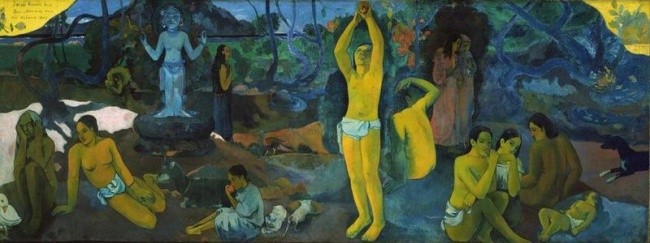
In the direction of Gauguin himself the picture should be read from right to left – three main groups of figures illustrate the questions raised in the title.
Three women with a child represent the beginning of life; the middle group symbolizes the daily existence of maturity; in the final group, according to the artist’s plan, “an old woman approaching death seems reconciled and devoted to her thoughts”, at her feet “a strange white bird … ” represents the uselessness of words.
Deeply philosophical picture postimpressionist Paul Gauguin was painted in Tahiti, where he fled from Paris. At the end of his work, he even wanted to commit suicide: “I believe that this painting is superior to all my previous paintings and that I will never create something better or even similar.” He lived another five years, and so it was.
“Guernica“
Pablo Picasso
1937, oil on canvas.
Museo Reina Sofía in Madrid
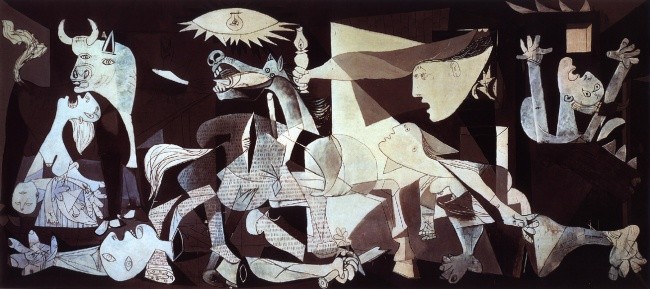
“Guernica” presents scenes of death, violence, cruelty, suffering, and helplessness, without specifying their immediate causes, but they are obvious. It is said that in 1940, Pablo Picasso called the Gestapo in Paris. It was about the painting that immediately came up. “Did you do it?” – “No, you did it.”
A huge canvas and fresco “Guernica”, Picasso wrote in 1937, tells of a raid by a volunteer Luftwaffe unit on the city of Guernica, which resulted in the complete destruction of the six thousandth city. The painting was painted in just a month – the first days of work on the painting Picasso worked 10-12 hours, and in the first sketches you could see the main idea. This is one of the best illustrations of the horrors of fascism, as well as human cruelty and grief.
“American Gothic”
Grant Wood
1930, oil on Canvas. 74 cm×62 cm.
Art Institute Of Chicago
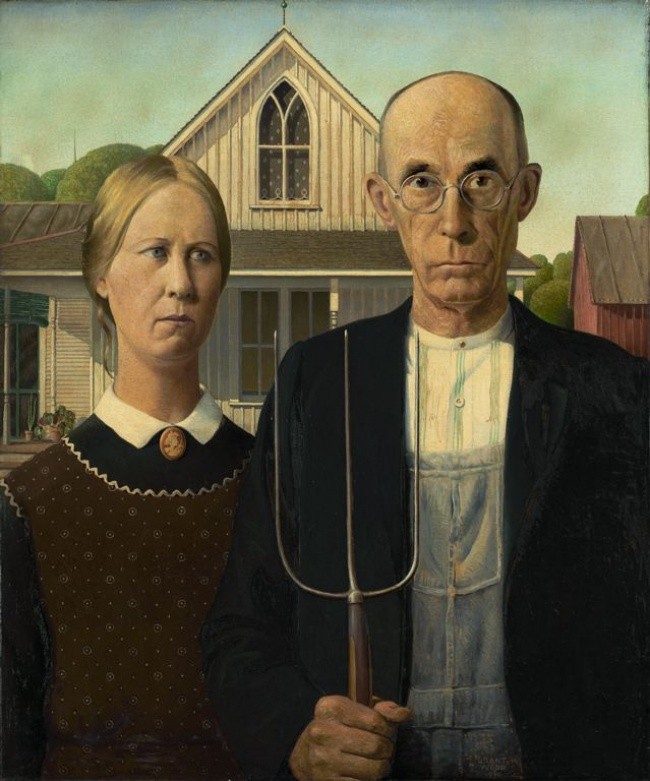
The painting with the gloomy images of father and daughter is full of details that point to the severity, puritanism and retrograde of the people depicted. Angry faces, pitchforks right in the middle of the painting, old-fashioned even by the standards of 1930 clothes, stitches on the farmer’s clothes, repeating the shape of the pitchforks, as a symbol of the threat, which is addressed to all who infringe. The canvas is saturated with gloomy details, which make you rush from the uncomfortable.
“American Gothic” – one of the most recognizable images in American art of the XX century, the most famous artistic memories of the XX and XXI centuries.
Interestingly, the judges of the competition at the Chicago Institute of Art took “Gothic” as a “humorous Valentine’s Day card”, and the people of Iowa State were terribly offended at Wood for depicting them in such a nasty light.
“The Lovers”
René Magritte
1928, oil on canvas.
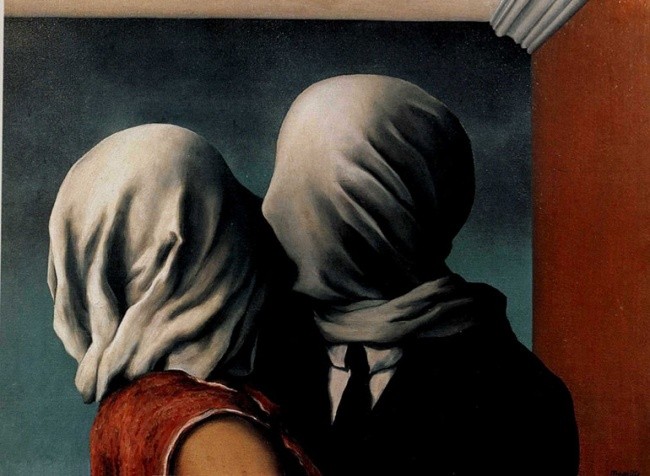
The painting “The Lovers” there are two versions. On one painting, a man and a woman, whose heads are covered with a white cloth, kissing, and on the other – “look” at the viewer. The painting is surprising and fascinating.
With two figures without faces, Magritte conveyed the idea of love’s blindness. About blindness in all senses: lovers do not see anyone, we do not see their true faces, and besides, lovers – a mystery even for each other. But with this apparent clarity, we still keep looking at Magritte lovers and thinking about them.
Almost all Magritte paintings are puzzles that are impossible to fully unravel, as they make questions about the very essence of existence. Magritte always talked about the deceptiveness of the visible, about its hidden mystery, which we usually do not notice.
“The Promenade”
Marc Chagall
1917, oil on canvas.
Tretyakov Gallery, Moscow
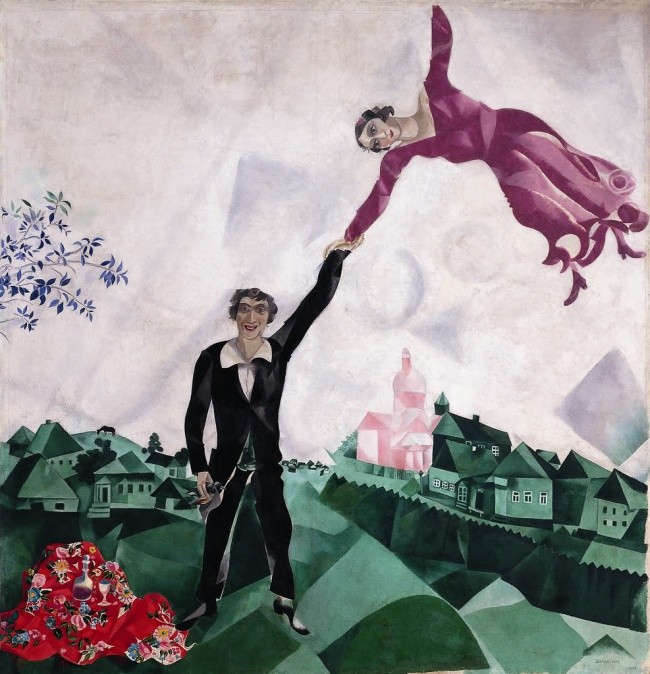
“The Promenade” is an artist’s self-portrait with his wife Bella. His beloved soars in the sky and that look will take him to flight and Chagall, who stands on the ground fragile as if touching it only with socks shoes. Chagall has a tit bird in his other hand – he is happy, he has both a tit in his hands (probably his painting) and love up to the sky.
Usually to the extremely serious in his painting, Marc Chagall wrote a delightful manifesto of his own happiness, filled with allegories and love.
“Garden of earthly pleasures“
Hieronymus Bosch
1500-1510, oil on a tree.
National Museum of the Prado, in Madrid
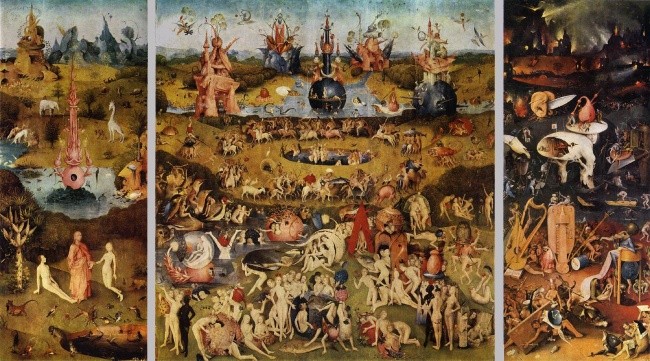
The “Garden of earthly pleasures” is the most famous triptych by Hieronymus Bosch, named after the central theme, and is dedicated to the sin of voluptuousness.
The painting is saturated with fantastic figures, structures, images of monsters as if acquired flesh hallucinations – all that can be called hellish cartoons of reality, which the author looks at with an extremely sharp look.
Some scientists wanted to see in a triptych a picture of human life through the prism of the futility of earthly love, others – the triumph of voluptuousness. However, the simplicity and certain detachment with which some of the figures in the picture were treated, as well as the favorable attitude of the church authorities to this work make it doubtful that its content could be the glorification of bodily pleasures.
To date, none of the available interpretations of the painting has been found to be the only correct one.
“The three ages of a woman”
Gustav Klimt
1905, oil on canvas.
National Gallery of Modern Art, Rome
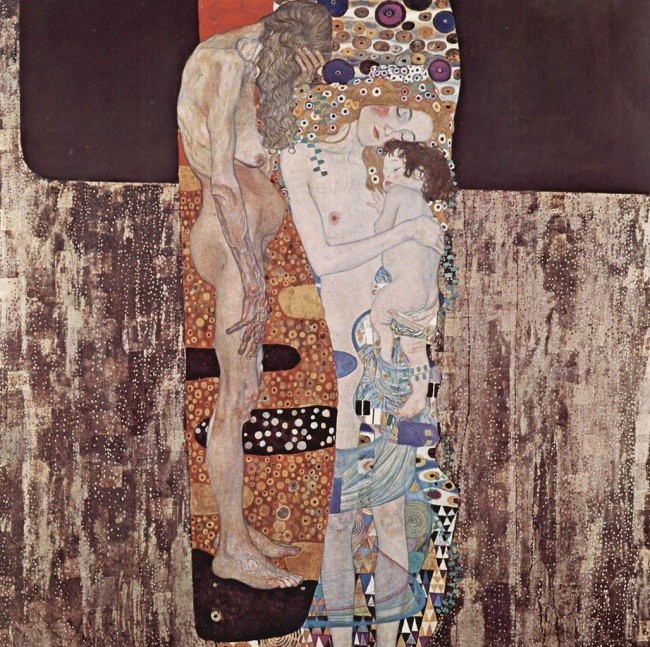
This work by Klimt brings a feeling of both joy and sadness. It contains three figures that tell the story of a woman’s life: carelessness, peace, and hopelessness.
The young woman’s image is organically intertwined with the ornament of life, the image of an old woman stands out from it. The contrast between the stylized image of a young woman and the naturalistic image of an old woman acquires a symbolic meaning: the first phase of life carries with it endless possibilities and metamorphoses, the last one – constancy and conflict with reality.
The canvas gets into the soul and makes you think about the depth of the artist’s message, as well as the depth and inevitability of life.
“The Family”
Egon Schiele
1918, oil on canvas.
Belvedere, Vienna, Austria
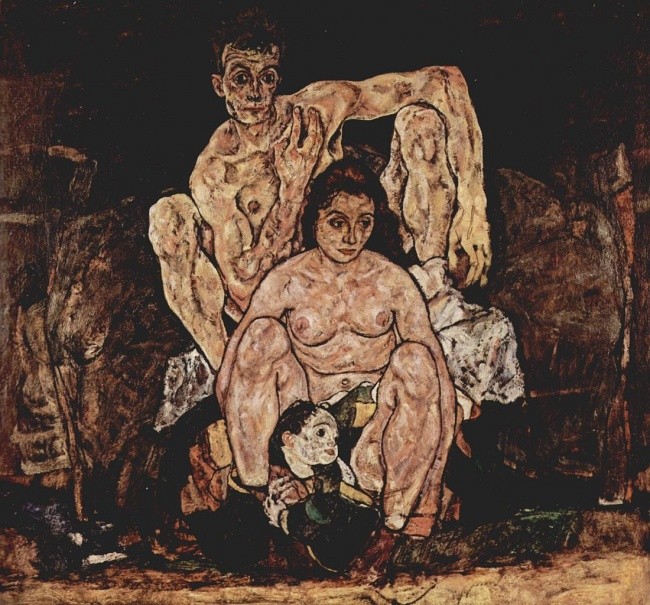
Schiele was a follower of Klimt, but like every great student, he did not copy his teacher but was looking for a new. Schiele is much more tragic, strange, and frightening than Gustav Klimt. In his works, there are many things that could be called pornography, a variety of perversions, naturalism, and at the same time-pinching despair.
“Family” is his latest work, in which despair has been brought to the absolute, even though it is the least odd-looking picture of him. The artist painted it before his death, at the age of 28, after his pregnant wife Edith died. The painting depicts the artist himself, his wife, and their unborn child.
“The Two Fridas”
Frida Kahlo
1939, oil on canvas
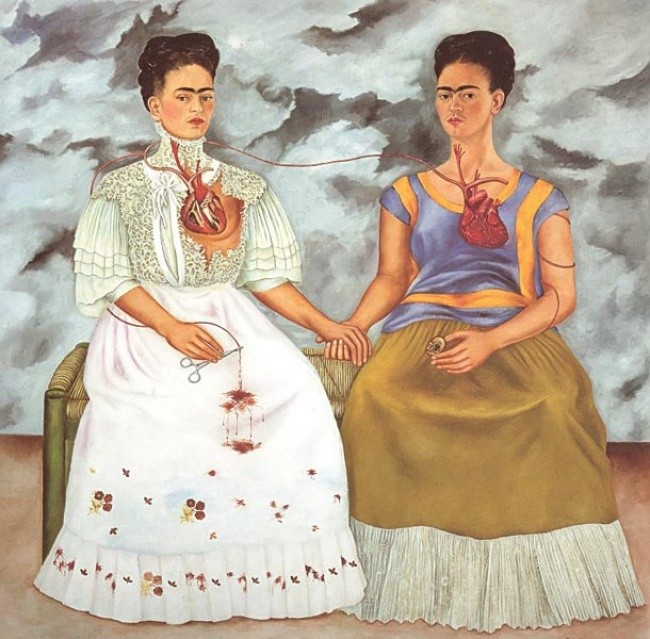
The story of the difficult life of Mexican artist Frida Calo became widely known after the release of the film “Frida” with Salma Hayek in the lead role. Calo wrote mostly self-portraits and explained it simply: “I write myself because I spend a lot of time alone and because I am the subject that I know best”.
There is no smile on Frida Kalo’s self-portrait: a serious, even mournful face, densely fused eyebrows, a slightly visible mustache above the tightly pressed lips. The artist’s ideas are encoded in the details, background, figures appearing next to the author’s image on canvases. Kalo symbolism is based on national traditions and is closely connected with the Indian mythology of the pre-Spanish period.
In one of her best paintings, ” The Two Fridas”, she expressed the masculine and the feminine, connected in it by a single blood system, and demonstrating its wholeness.
“The Waterloo Bridge”
Claude Monet
1899, oil on canvas.
Hermitage Museum
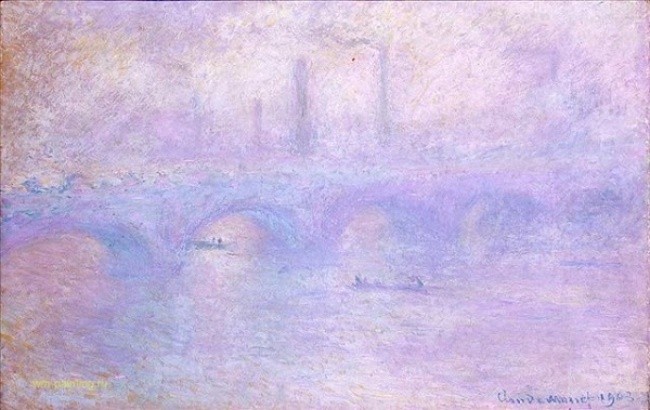
When viewing the painting from a close range, the viewer sees nothing but a canvas with frequent thick oil strokes. All the magic of the work is revealed when we gradually begin to move away from the canvas at a longer distance.
At first, we see incomprehensible semi-circles passing through the middle of the painting, then we see the clear outlines of boats, and if we move about two meters, all the connecting works will appear in front of us and form a logical chain.
“Number 5, 1948”
Jackson Pollock
1948, fibrolite, oil.
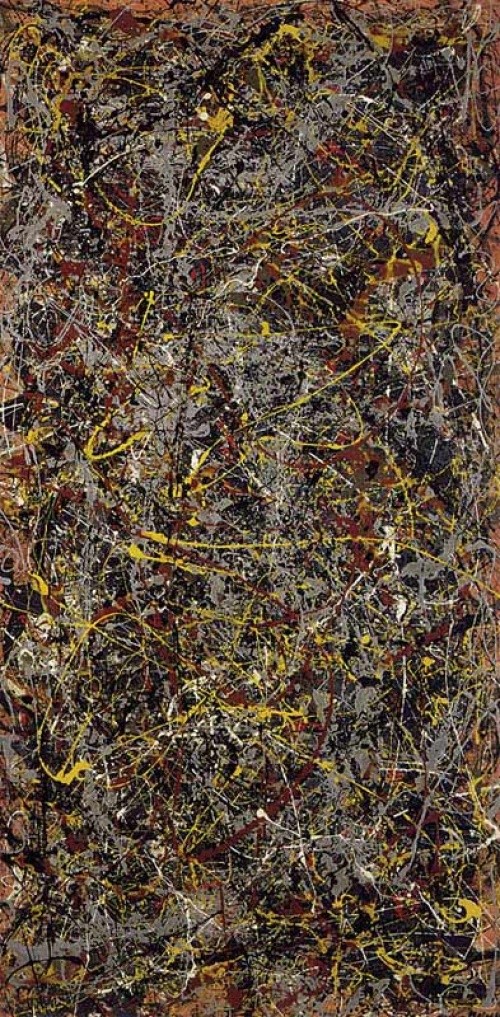
The strange thing about this painting is that the canvas of the American leader of abstract expressionism, which he painted while spilling paint over a piece of fibrolite placed on the floor, is one of the most expensive paintings in the world. In 2006, at the auction, Sotheby’s for it paid 140 million dollars. David Giffen, the film producer, and collector, sold it to the Mexican financier David Martinez.
“I continue to move away from the artist’s usual tools such as easel, palette, and brushes. I prefer sticks, scoop sticks, knives, and pouring paint or a mixture of paint with sand, broken glass, or something else. When I’m inside a painting, I don’t know what I’m doing. Understanding comes later. I have no fear of changing or destroying the image because the painting lives its own life. I just help it out. But if I lose contact with a painting, it gets dirty and disorderly. If not, it’s pure harmony, the ease of how you take and give”.
“Man and Woman in Front of a Pile of Excrement”
Joan Miró
1935, oil on copper.
Joan Miró Foundation, Barcelona, Spain
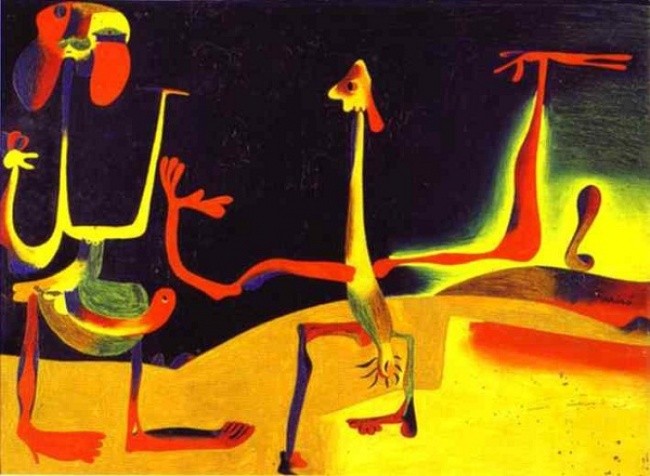
That’s a good title. And who would have thought this job would tell us about the horrors of civil war.
It was painted on a sheet of copper in the week between October 15 and 22, 1935. According to Miro, it is the result of an attempt to portray the tragedy of the Spanish Civil War, a picture of a period of anxiety. The canvas depicts figures of men and women reaching each other in their arms, but not moving. The enlarged genitals and ominous colors were described by the author as “full of disgust and vile sexuality”.
“Erosion”
Jacek Yerka
2000, Poland
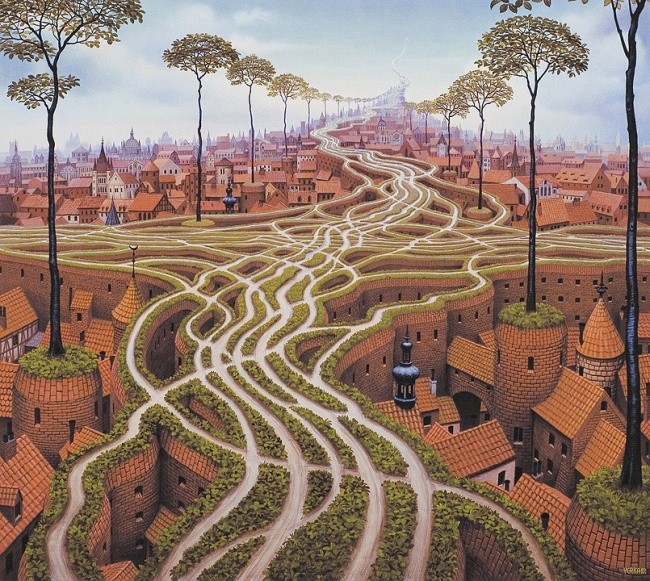
Polish neosurrealist is known all over the world for his amazing paintings, which combine realities that create new ones. It is difficult to consider his extremely detailed and to some extent touching works in a single one.
“Hands against him”
Bill Stoneham
1972
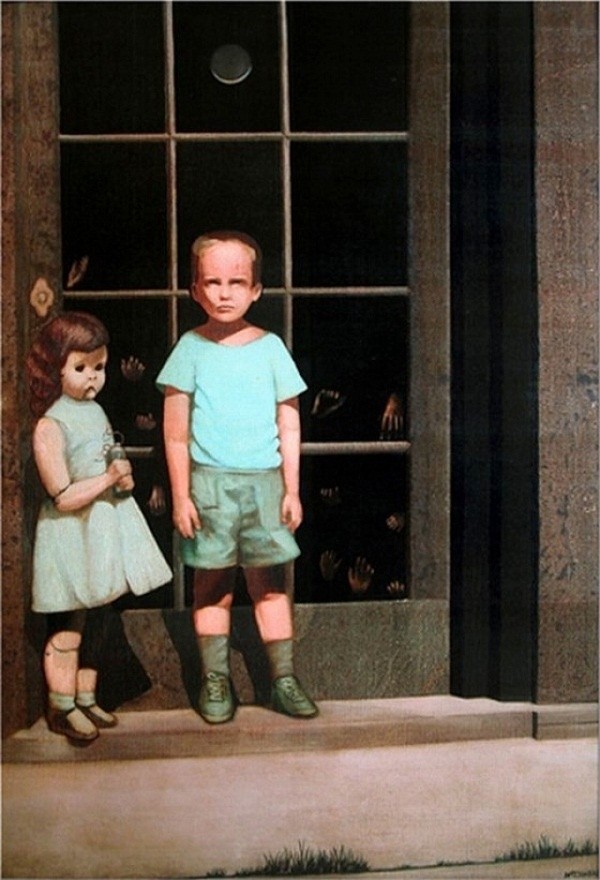
This work, of course, can not be attributed to the masterpieces of world painting, but the fact that it is strange.
Around the painting with a boy, a doll, and palms pinned to the glass, there is a lot of legends. According to one of the myths ” because of this painting die ” or “children on it are alive”. The painting looks really creepy, which creates a lot of fears and speculations among people with weak psyche.
The artist also assured that the painting depicts him at the age of five years, that the door – a representation of the dividing line between the real world and the world of dreams, and the doll – a guide that can take the boy through this world. The hands represent alternative lives or opportunities.
The painting became famous in February 2000, when it was put up for sale on eBay with the prehistory that the painting is “haunted”. “Hands Against Him” was bought for $1,025 by Kim Smith, who was then simply swamped with eerie letters of stories and demands to burn the painting.























